Recent Viewing: July 2013
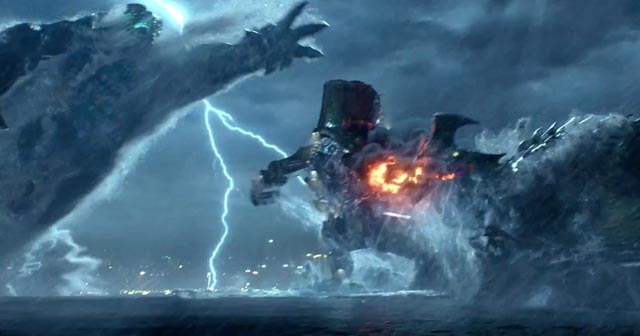
The most recent movie I’ve seen in a theatre is Guillermo Del Toro’s Pacific Rim. I confess I didn’t have high hopes. I’ve always found his big budget mainstream productions far less satisfying than his more personal Spanish films, and the idea of giant robots versus giant monsters sounded like a live-action retread of too many anime TV shows. Given what I’d seen in the trailers, I prepared myself by watching Stuart Gordon’s Robot Jox (1989) which features a world in which war has been abolished and replaced by duels between giant robots piloted by elite soldiers. Del Toro’s tech seemed suspiciously similar to Gordon’s, though being much bigger his robots are piloted by two soldiers who have to be mind-linked, sharing memories and emotions as they sock it to the giant monsters.
My friend Curtis and I opted for the IMAX 3D version of Pacific Rim, although we both tend to avoid 3D most of the time. Turned out to be well worth it. The monumentally-scaled movie is a fan boy’s dream and it had me hooked from the start. Dumb, yes, but epically detailed, the mixture of scale and visual detail making it the best 3D experience since Avatar. The somewhat by-the-numbers script is sufficiently well-developed to support the non-stop action. As so many big summer blockbuster action movies are dissatisfying these days, it’s a real pleasure to see one this well-crafted. Anyone who grew up on Japanese kaiju fantasies will be pleased that Del Toro got it all so right here (certainly compared to Roland Emmerich’s disastrous 1998 misfire Godzilla, which had no respect for the genre).
On video
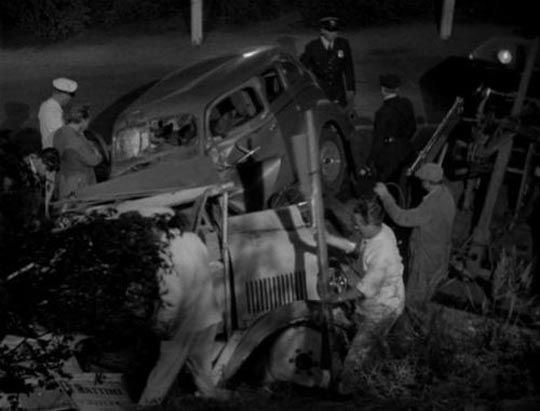
Crime Does Not Pay (1935-47)
On video, I continue to watch a lot of older titles. The Warner Archive six-disk collection of MGM’s Crime Does Not Pay shorts is consistently entertaining and an interesting window on the ways the big studios worked back in the golden age. These mini-dramas (averaging 17-20 minutes) were not only a way of keeping contract players busy, they also served as a training ground for creative personnel and technicians. The initial public service element, offering warnings to the audience about the consequences of bad behaviour and dire illustrations of the criminal scams honest people could fall prey to, gradually gives way to noirish morality plays, all presented as real life case studies (with the names of all involved altered “for obvious reasons”). There are a lot of familiar faces on-screen (Detour‘s Tom Neal is a regular, Frank Morgan and Barry Nelson appear multiple times), and behind the camera we find names like Joseph M. Newman, who directed many episodes and later went on to helm sci-fi favourite This Island Earth (1955); prolific B-movie specialists Edward L. Cahn, Felix Feist, Roy Rowland; the great Jacques Tourneur and Fred Zinneman, who both got their start in Hollywood directing numerous shorts in the late ’30s and early ’40s; and even Joseph Losey, whose episode A Gun In His Hand (1945), with its villainous cop, prefigures the sharp noirs he would make before being exiled to Europe by the anti-communist blacklist. These 49 shorts show what a big studio could do when its resources were applied to what were essentially just program filler; some of these tight little movies are more entertaining than many prestigious A productions.
*
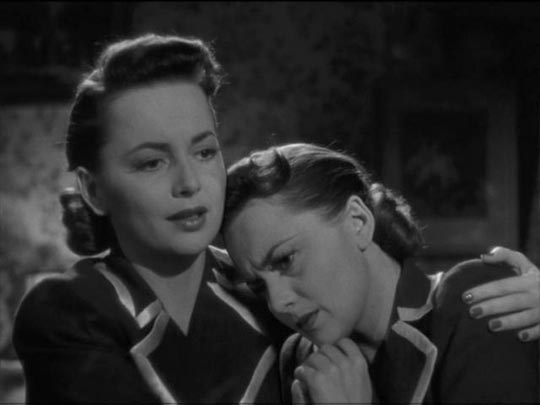
The Dark Mirror (Robert Siodmak, 1946)
Robert Siodmak’s The Dark Mirror (1946) is a noir-tinged melodrama about twin sisters (both played by Olivia de Havilland), one of whom is possibly homicidal. After a doctor is murdered in his apartment, witnesses clearly identify a woman leaving the scene and the police track her down only to discover that she’s actually two identical women, and neither of them is talking. Although one is obviously the killer and the other covering for her, the DA can’t proceed with charges because there’s no way to prove which one actually stuck the knife in. A psychiatrist who specializes in twins gets them to agree to take part in some psychological tests and he falls for the “good” sister and diagnoses the “bad” one as a paranoid schizophrenic – his preference for the former pushing the latter to start driving her sister crazy to the point where she’ll commit suicide. Despite the somewhat corny plot mechanics, Siodmak’s direction is excellent and the twinning of de Havilland flawless. Viewers accustomed to computer-assisted effects probably wouldn’t be aware of just how remarkable the movie is technically. (Olive Films Blu-ray)
*
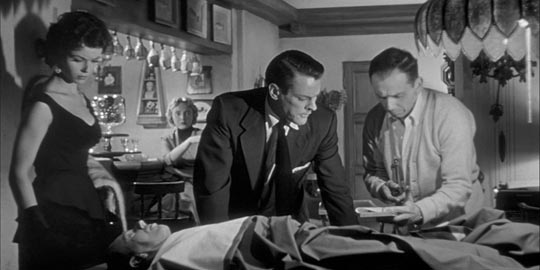
Invasion of the Body Snatchers (Don Siegel, 1956)
Don Siegel’s adaptation of Jack Finney’s perennial, much-filmed Invasion of the Body Snatchers (1956) is one of the key science fiction films of the ’50s, and a kind of paranoid Rorschach Test, interpreted as either a right wing anti-Red screed or a warning about the dangers of excessive conformity (i.e. the stifling effects of McCarthy-ite suppression of independent thought). Either way, it’s one of the most effective genre films of its day and remains a tense, engaging viewing experience today. (Olive Films Blu-ray)
*
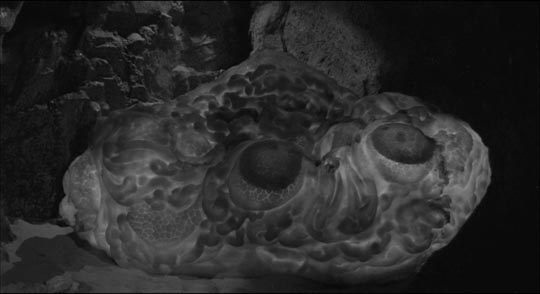
The Space Children (Jack Arnold, 1958)
The Space Children (1958) is perhaps the least – and certainly until now the most difficult to see – of Jack Arnold’s sci-fi movies. Obviously made on a very restricted budget, its story of a group of children who encounter an alien intelligence determined to stop the launch of a nuclear weapons platform which will give the U.S. global supremacy is surprisingly radical for the time. The script by Bernard C. Schoenfeld, from a story by Tom Filer, merely sketches in the situation, with a few glimpses of the psychological costs to the adults of working on the project. The kids, when in communion with the alien, suggest a more benign version of the children in Wolf Rilla’s Village of the Damned, made two years later. Although conceptually interesting, the mismatched studio sets and coastal locations, and the flat TV-style lighting and camerawork, give the movie a rushed look, lacking the sense of commitment evident in Arnold’s better-known films. (Olive Films Blu-ray)
*
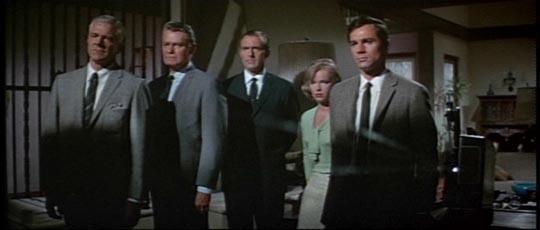
The Satan Bug (John Sturges, 1964)
I’ve always had a taste for apocalyptic stories, possibly going back to the age of seven or eight when I first read H.G. Wells’ The War of the Worlds and saw Hammer’s adaptation of Nigel Kneale’s BBC serial Quatermass 2 on TV. For whatever perverse reason, the idea of a catastrophic end to civilization appeals to me (as a narrative idea, not necessarily as a reality!) and I’m often quite forgiving of the deficiencies of a particular story, movie or TV show. Which is why I was happy to see that The Satan Bug had turned up as a burn-on-demand DVD from the MGM Limited Edition Collection and ordered a copy from an Amazon seller. I first saw this movie, directed by John Sturges in 1964, on TV in the early ’70s and I think I saw it a couple of times in a fairly short period, certainly enough to fix it in my memory as a thriller about a hostile agent threatening to unleash the deadliest bio-weapon bug ever created in a government lab.
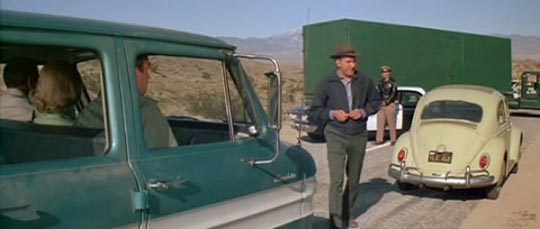
Well, the disk quality is barely passable, probably mastered from an old non-anamorphic transfer done in the ’90s for a laserdisk edition; the picture is soft, with weak colours and poor contrast. And the film itself, I’m sorry to say, is really pretty dull. Despite a script by two experienced writers (James Clavell and Edward Anhalt) adapted from a potboiler by the extremely prolific Alistair MacLean, the narrative is barely coherent, the performances of a fairly decent cast (including Richard Basehart as the villain, George Maharis as the hero, Anne Francis as the girl, and Dana Andrews as the authority figure) are little more than perfunctory, and the direction by Sturges seemingly non-existent. True, Sturges was often a plodding and unimaginative filmmaker, but at his best he could turn in a solid piece of entertainment like The Magnificent Seven (1960) or a crowd-pleaser like The Great Escape (1963) or a really fine and thoughtful drama like his best film, Bad Day At Black Rock (1955). The Satan Bug, unfortunately, is far at the other end of his spectrum, even duller than his stranded-in-space snooze Marooned (1969). Sometimes it really is better to stick with your memories and not try to go back. (MGM Limited Edition Collection DVDr)
*
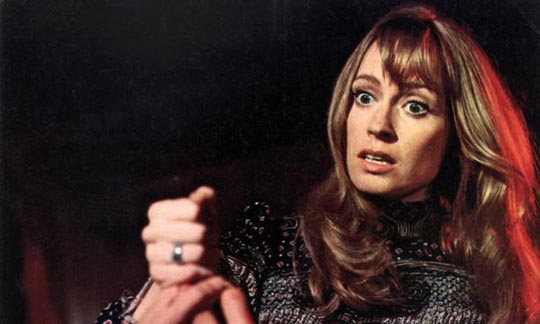
Assault (Sidney Hayers, 1971)
In a forty-year career, mostly devoted to television work, Sidney Hayers managed to direct a handful of effective little movies. He was one of those almost faceless toilers, prolific but generally impersonal, who keep the movie and TV business stocked with product to fill theatre and broadcast schedules. His best-known film is probably Night of the Eagle (1962, aka Burn, Witch, Burn), an effectively atmospheric adaptation of Fritz Leiber’s novel Conjure Wife. His other horror film, Circus of Horrors (1960), features a sadistic plastic surgeon hiding out in a circus in Europe. He also made the odd Canadian drama The Trap (1966), in which fur trapper Oliver Reed kidnaps mute Rita Tushingham and drags her off into the wilds as his unwilling wife. His crime films Payroll (1961), about a heist gone wrong, and Revenge (1971), a grimly effective story of vigilante action which the upcoming Prisoners seems to echo, are among his best. Assault (1971), however, never manages to overcome a weak script by John Kruse (who also wrote Revenge, as well as the great Cy Endfield/Stanley Baker film Hell Drivers [1957]). Assault deals with a killer preying on the students of an exclusive girls’ school and the efforts of a teacher (Suzy Kendall) to turn herself into bait. Packed as it is with red herrings, Hayers and his male cast manage to make every man in the story cartoonishly suspicious, and yet there’s little mystery about who the actual killer is. (Network region 2 DVD)
*
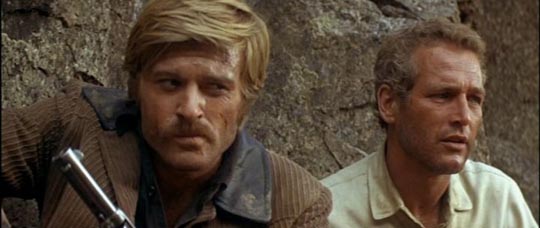
Butch Cassidy and the Sundance Kid (George Roy Hill, 1969)
Watched now on Blu-ray, it’s difficult to credit just how big George Roy Hill’s Butch Cassidy and the Sundance Kid (1969) was on its initial release. William Goldman’s Oscar-winning script now seems so glib and shallow with its anachronistic jokes desperately fishing for counter-culture cred that at times the movie is almost embarrassing. Completely lacking the troubling nuances of Arthur Penn’s Bonnie and Clyde (1967) or the complicated mixture of male bonding and nightmarish violence of The Wild Bunch, released the same year, Hill’s film idolizes its ever-so-pretty outlaw heroes and displaces the consequences of their antisocial behaviour with an excessive dose of what is meant to pass for charm. Conrad Hall’s widescreen cinematography (which also won an Oscar) is easy on the eyes, but the movie seems utterly weightless now. The treatment of the boys’ shared girlfriend Etta Place (Katherine Ross) is painfully sexist; only Strother Martin in his brief supporting role survives the passage of time. (20th Century Fox Blu-ray)
*
Two very different new movies I watched recently are Rob Zombie’s The Lords of Salem and Shane Carruth’s Upstream Color. I’m no doubt going to completely discredit myself by saying this, but Zombie’s movie is, in the end, the more satisfying.
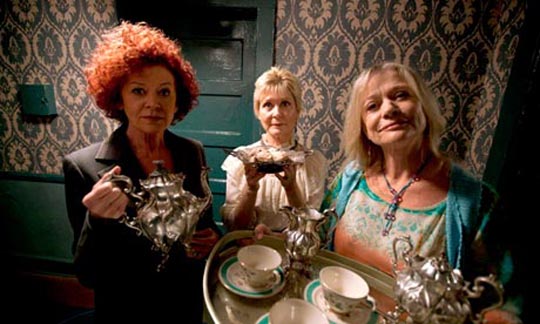
The Lords of Salem (Rob Zombie, 2012)
The Lords of Salem comes closest to being a conventional movie among Zombie’s generally unwatchable oeuvre. The script is derivative – drawing from Mario Bava’s Black Sunday, Michael Reeves’ The She-Beast and many others for its story of ancient witches visiting their vengeance on the descendants of those who executed them hundreds of years ago – but Zombie has signed on an engaging cast of female actors who don’t seem to get a lot of work these days: Judy Geeson (who I had a crush on for years after To Sir, With Love [1967]), Meg Foster (a major presence on television from the ’60s through the ’80s, and perhaps most notable on the big screen in John Carpenter’s They Live [1988]), Patricia Quinn (best known for The Rocky Horror Picture Show), plus the seemingly very busy Dee Wallace (best known to genre fans for The Hills Have Eyes [1977], The Howling [1981] and ET [1982]). Restraining himself from his usual eyesore visuals and seizure inducing editing, Zombie actually builds some genuine atmosphere as Salem radio DJ Heidi Hawthorne (Sheri Moon Zombie) gradually discovers that she’s the key to the witches’ plans to bring Satan back to Earth. (Starz/Anchor Bay DVD)
*
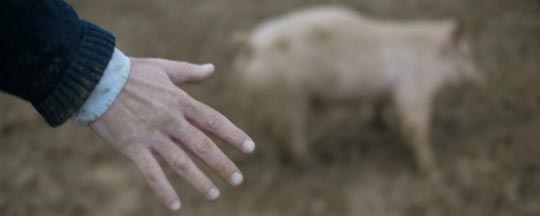
Upstream Color (Shane Carruth, 2013)
Shane Carruth’s much delayed follow-up to his remarkable debut feature, 2004’s intricate meditation on time travel, Primer, is a much classier piece of work than Zombie’s pop horror, but after a rich and creepy opening act in which a woman named Kris (Amy Seimetz) is infected with a parasitic worm which allows a character named Thief (Thiago Martins) to control her like a puppet, emptying out her bank accounts and leaving her with a shattered sense of her own identity, Upstream Color drifts off into vagueness and portentous symbolism. She meets Jeff (played by Carruth) and they embark on a relationship in which their personalities become confused, each claiming memories which the other insists are his or her own. Meanwhile, a man known as the Sampler (Andrew Sensenig) drifts through the film, apparently unseen by anyone else, recording sounds and running a pig farm (he performs some kind of surgical procedure to remove the parasites from Kris, apparently transferring them to a pig; and later throws a sack of piglets into a river, where they drown and rot, possibly spreading the parasites to the surrounding environment). Once the film focuses on the relationship, it starts to look like endless outtakes from Terrence Malick’s Tree of Life – Carruth’s camerawork, editing strategies and use of sound are all blatantly drawn from Malick – and the vagueness of the film, in contrast to the enigmatic complexity of Primer, becomes enervating. (Flatiron Film Company Blu-ray/DVD Combo)
Comments